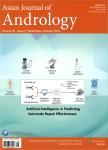Persistent organic pollutants and male reproductive health
Persistent organic pollutants and male reproductive health作者机构:Department of Occupational Medicine Danish Ramazzini Centre Aarhus University Hospital Aarhus Denmark Reproductive Medicine Centre Lund University Skane University Hospital Malm6 Sweden Department of Occupational and Environmental Medicine Bispebjerg Hospital of Copenhagen University
出 版 物:《Asian Journal of Andrology》 (亚洲男性学杂志(英文版))
年 卷 期:2014年第16卷第1期
页 面:71-80页
核心收录:
学科分类:083001[工学-环境科学] 0830[工学-环境科学与工程(可授工学、理学、农学学位)] 1004[医学-公共卫生与预防医学(可授医学、理学学位)] 08[工学] 100404[医学-儿少卫生与妇幼保健学] 10[医学]
主 题:endocrine disruption male reproduction persistent organic compounds reproductive hormones semen quality
摘 要:Environmental contaminants such as persistent organic pollutants (POPs) are man-made bioaccumulative compounds with long half-lives that are found throughout the world as a result of heavy use in a variety of consumer products during the twentieth century. Wildlife and animal studies have long suggested adverse effects of exposure to these compounds on human reproductive health, which, according to the endocrine disrupter hypothesis, are ascribed to the compounds' potential to interfere with endocrine signaling, especially when exposure occurs during certain phases of fetal and childhood development. An extensive number of epidemiological studies have addressed the possible effects of exposure to POPs on male reproductive health, but the results are conflicting. Thus far, most studies have focused on investigating exposure and the different reproductive health outcomes during adulthood. Some studies have addressed the potential harmful effects of fetal exposure with respect to malformations at birth and/ or reproductive development, whereas only a few studies have been able to evaluate whether intrauterine exposure to POPs has long-term consequences for male reproductive health with measurable effects on semen quality markers and reproductive hormone levels in adulthood. Humans are not exposed to a single compound at a time, but rather, to a variety of different substances with potential divergent hormonal effects. Hence, how to best analyze epidemiological data on combined exposures remains a significant challenge. This review on POPs will focus on current knowledge regarding the potential effects of exposure to POPs during fetal and childhood life and during adulthood on male reproductive health, including a critical revision of the endocrine disruption hypothesis, a comment on pubertal development as part of reproductive development and a comment on how to account for combined exposures in epidemiological research.




